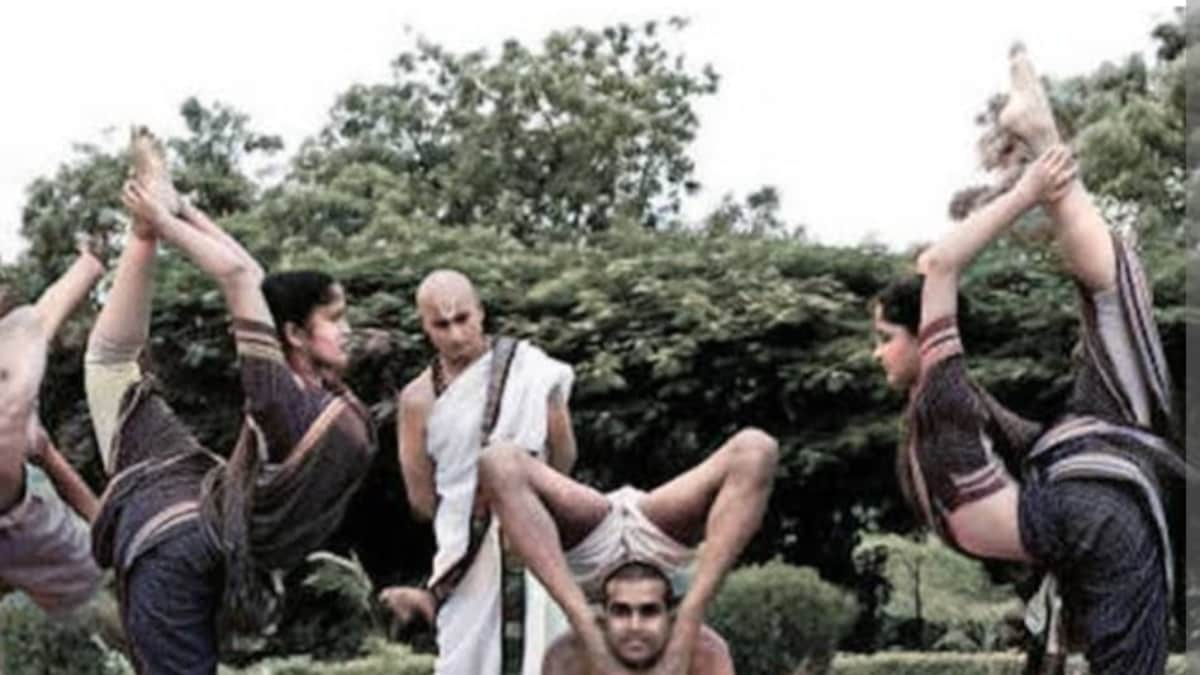You are convinced about Yoga but you are waiting for the “right time” to join the classes. So, let's take a look at some cool yoga gear that could give you a motivational trigger. The excitement of shopping could precipitate your Yoga trip!
DRESS TO PLEASE YOURSELF
“Eat to please yourself, but dress to please others,” said Benjamin Franklin. In Yoga, you eat for yourself and dress for… well, yourself. It cannot be any other way: you cannot allow your clothing to not contribute to the comfort of the body and the liberation of the mind.
Some non-negotiables are: comfort, keeping your mind free of distractions, sturdy, well-stitched gear, and durability. To avoid hurting yourself, avoid buttons, knots and zippers.
To be honest, you can practice Yoga in any type of clothing. At home you can still wear the loincloth preferred by traditional (male) yogis: it is the one that hinders movement the least.
Yogi women would tie the sarees in such a way that one end was between the legs and tucked into the waist, so that movements could be free. Many asanas can be performed in a sari even without special draping.
But assuming the learning is taking place among a group of people at a school, retreat, or yoga studio, you may want to choose from other commonly used options. Most yoga schools and studios expect modest clothing that doesn't show too much skin. In India, yoga teachers often suggest wearing loose cotton clothing as it allows you to breathe easier and tight clothing can inhibit it.
That being said, there are enough options in yoga clothing to make your own style statement.
ESSENTIALS FOR THE YOGA WARDROBE
Pro tip: Invest in a combination of each type of clothing to see what works for you and then buy more of the same.
Synthetic Yoga pants. Sweatpants. Leggings. Bermuda
If you practice rigorous Yoga, you may have a preference for this category. They require little maintenance and do not tip over when you make investments. The disadvantages are lack of breathability and lack of environmental friendliness, since most are made of nylon and polyester.
Pair it with tank tops or yoga tops; Women can also wear crop tops and comfortable sports bras. The latter help keep the chest in place during quick movements; The bra strap should be wide, so that it does not hurt the shoulders.
Linen, khadi and cotton dhoti pants and harem pants
These are great options if you value convenience, sustainability, and biodegradability. Choose this type of outfit if you want to show less body shape. While pants and pajamas would flip up if you lift your legs, pre-stitched dhotis will not as they are narrow at the ankle. They can be worn with linen and organic cotton blouses or short kurtas.
New things people use on yoga retreats include bamboo and hemp fabrics. Among the garments, linen and cotton sets, jumpsuits and bodysuits are in fashion; Plus, she shrugs off sports bras worn over yoga pants.
Create and stick to your style
Pair a cotton t-shirt or sports bra with dhoti pants for a cool, chic, comfortable and fusion look. Try a short cotton kurta with leggings.
Ditch everything and opt for familiarity: wear a kurta over cotton slub pants or dhoti pants; Wear a sari with a churidar inside that makes it easy to lift your legs, or a sari draped like a dhoti. Men can opt for the shirtless dhoti style.
Nothing for the feet
Practice yoga barefoot. This ensures closeness to the earth, grounding and a firmer grip. Additionally, the sole of the foot has sensory receptors that help with posture and balance; Being barefoot helps stimulate and improve the functioning of these receptors.
Wide hair headband
Tie your hair tightly to maintain concentration: to prevent you from pulling your hair, putting it in your mouth, poking your eyes, or tickling your nose.
YOGA MATS: ARE THEY NECESSARY?
Preferably, have a separate Yoga space in your home that is well lit and ventilated; Burn incense or a small piece of pure camphor at one end, every day. Avoid loud noises in this area even during non-yoga hours.
You can do Yoga without a 'mat', but there needs to be something between you and the ground to prevent the energy created during the practice from dissipating into the ground. Yoga teachers, therefore, insist on a mat. Choose your mat based on what you prioritize:
Be close to nature: invest in natural materials
Straw mats, also known as chatais, were the traditional choice for Yoga. They are durable, eco-friendly, good for the body and great for meditation. They are easy to find and economical, as well as durable. The only downside is that they don't do well in humid conditions, so keep them away in a dry location. They can be cleaned and washed, but they must be dried thoroughly in the sun.
Cotton mats, also known as durries, are an economical and sustainable option. Being ribbed they allow a better grip. “Tribal yoga mats,” which come in ethnic and modern designs, serve the same purpose. The flip side is that they are heavy and not easy to wash; Additionally, they fade over time.
Rubber mats
Choose them if you want a natural, non-slip, sweat-wicking product with some cushioning. A slight odor and sweat stains are disadvantages, but now you also have rubber mats fused with terry cloth and suede.
Synthetic mats
Choose PVC, polyurethane, PER foam, or TPE foam if you want something affordable, lightweight, non-slip, compact for travel, and folds easily. The flip side is these buckles under sunlight and high temperatures. Furthermore, being synthetic, they have all the disadvantages of not being ecological.
The latest: smart mats
This new kid on the Yoga block is a mat equipped with built-in sensors that can track movements in real time to allow checking balance, pressure and alignments during Yoga practice. Several other advanced features include real-time feedback and guidance.
Ultimately, yoga is about controlling the mind – think long term and choose what brings you calm and peace!
















